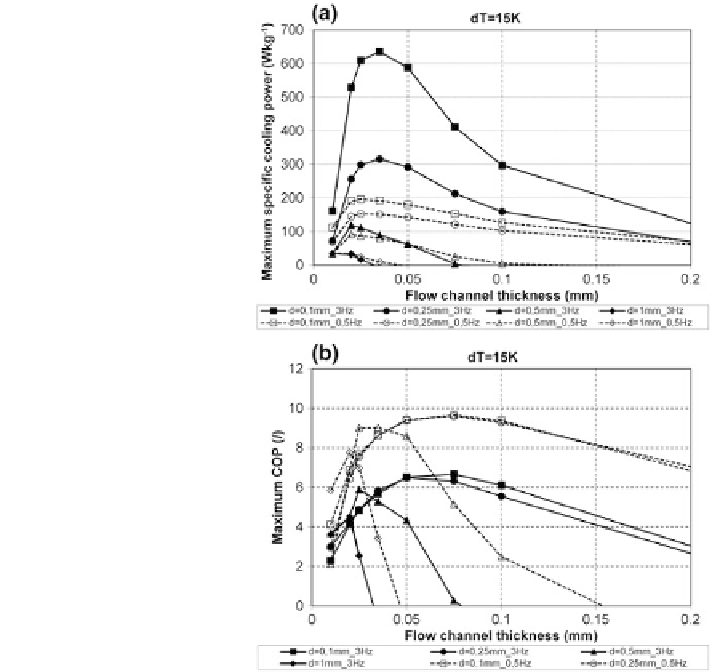Environmental Engineering Reference
In-Depth Information
Fig. 4.21 a
The maximum
speci
c cooling power as a
function of the channel
thickness for the parallel-plate
AMR at two different
operating frequencies (dotted
lines for 0.5 Hz and full lines
for 3 Hz) and four plate
thicknesses.
b
The maximum
COP as a function of the
channel thickness for the
parallel-plate AMR at two
different operating
frequencies (dotted lines for
0.5 Hz and full lines for 3 Hz)
and four plate thicknesses
However, even though it is to be expected that different magnetocaloric mate-
rials, different heat-transfer
eld changes, etc. would
probably lead to different optimum AMR geometries, as shown below, it is crucial
to be aware of the impact of the thermohydraulic properties and the AMR geometry
on its cooling characteristics.
Figure
4.15
shows the speci
fl
uids, different magnetic
c cooling power and the COP as a function of the
sphere diameter for different lengths of a packed-bed AMR. It is evident that there
is a well-dened optimum sphere diameter for each length of the packed-bed AMR
from the point of view of the speci
c cooling power as well as the COP. In the case
of a small sphere diameter (below the optimum value), the viscous losses dominate
and are increasing with a decreasing sphere diameter and an increased length of the
AMR. In the case of a greater sphere diameter (above the optimum value) the heat
transfer losses dominate, since in this case the AMR is
lled with larger spheres,
which leads to a smaller heat transfer coef
cient and a smaller total heat transfer
area. It is further evident that at a high operating frequency, the packed-bed AMR
shows the best performance for very short lengths (20 mm or even less, according
to the presented trend of dependency), while at a low operating frequency the best

Search WWH ::

Custom Search